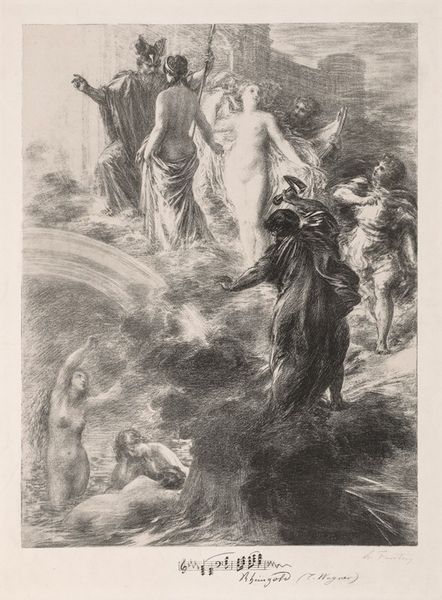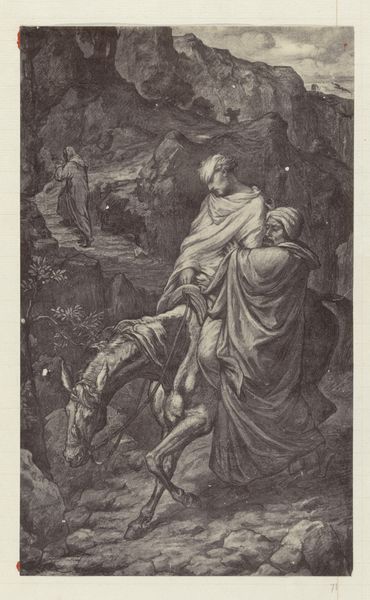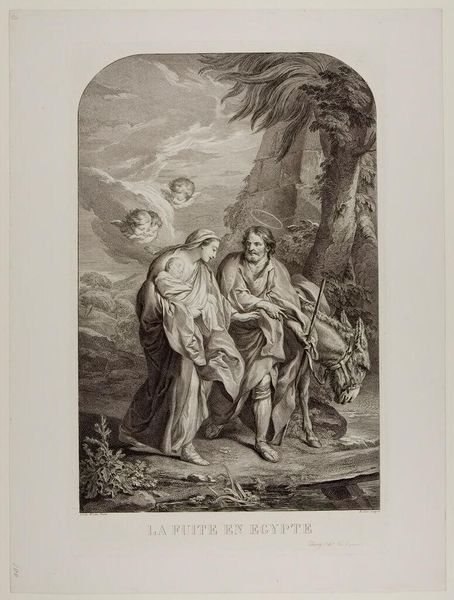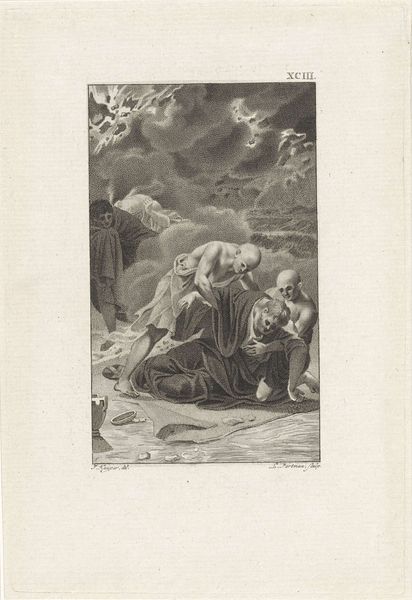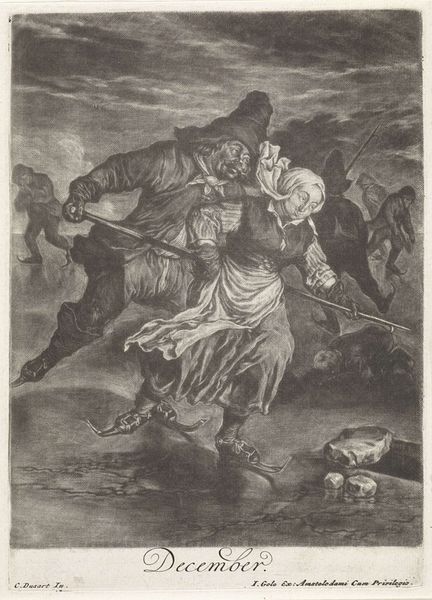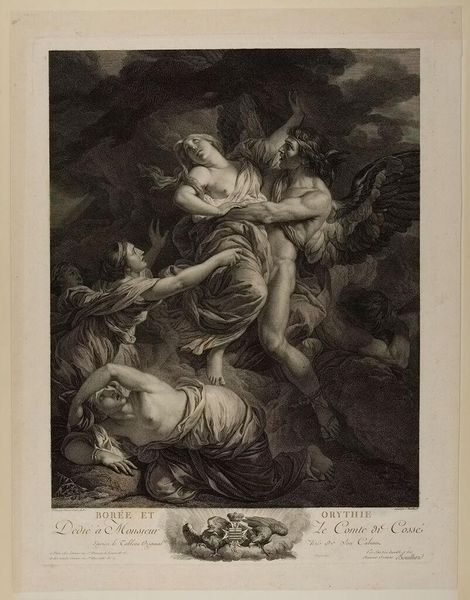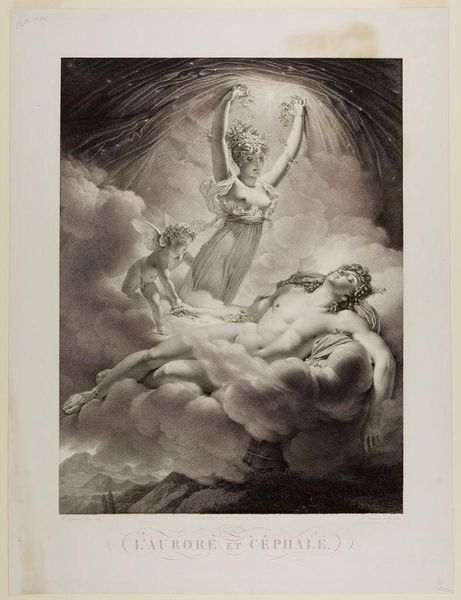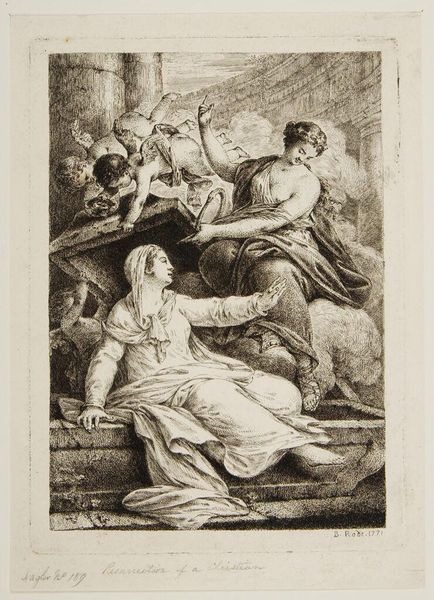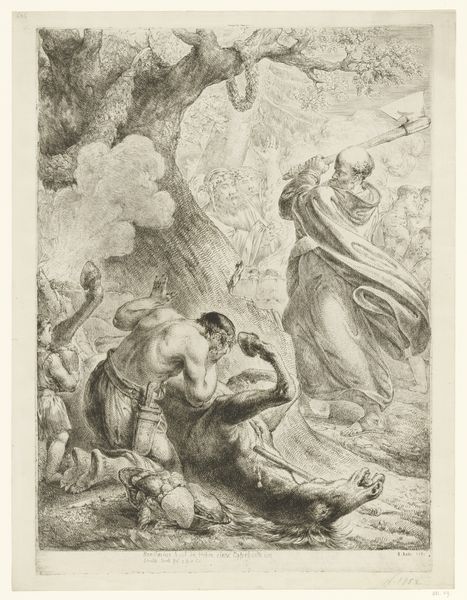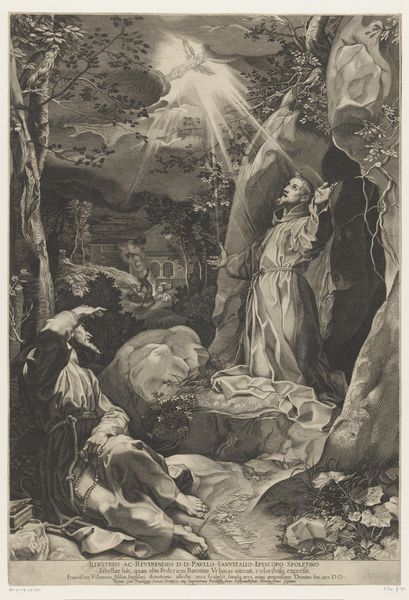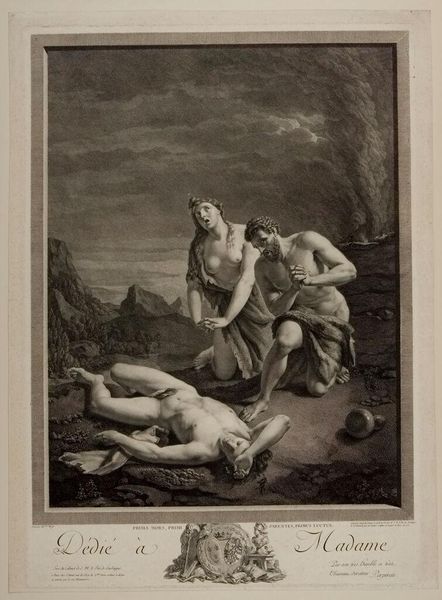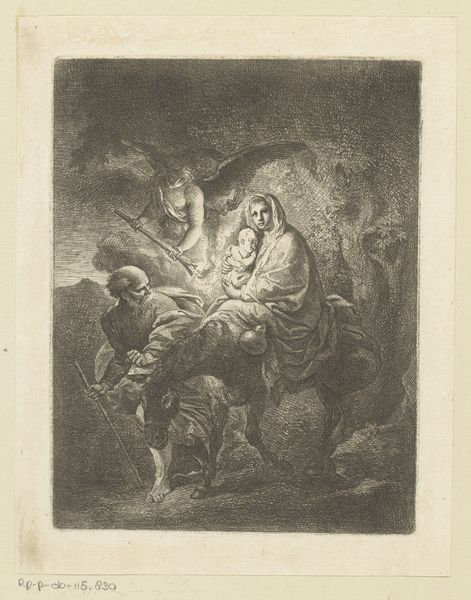
Copyright: Public domain
Curator: This print, created in 1879, is titled "Murcia" and comes to us from the hand of Jean-François Portaels. It’s a striking piece of narrative art, and given it's in a private collection, not often seen publicly. What's your first impression? Editor: A palpable sense of dread. The dramatic lighting and frantic figures immediately suggest a scene of crisis and survival, an emotional rollercoaster! There's so much action, almost like it's overflowing. Curator: Indeed. Structurally, observe the diagonal lines that bisect the composition. This emphasizes the chaos—a flood perhaps, implied by the torrents of water depicted behind the figures. The use of engraving adds a harsh contrast, heightening the drama. Editor: Absolutely. And consider the socio-political backdrop. In 1879, Spain would have been grappling with issues of industrialization and displacement. Water often carries significance, so seeing the destructive force here—this speaks volumes about vulnerability to the raw power of nature as well as class inequality at this time. How can we safeguard our most vulnerable from impending calamity? Curator: I see your point about the setting reflecting broader vulnerabilities, but I want to focus on Portaels’ handling of line and texture. See how he creates a sense of depth in the cascading water simply by varying the density of engraved lines? This is a mastery of the medium. Editor: It's more than just line work, it is narrative work, wouldn't you agree? How can one truly assess an image of devastation like this without considering historical suffering? Consider too the woman with the child – maternal strength in crisis. And the man by her side with the face of distress, his open hand seeming to say "Why?" Their plight must mean more than aesthetic composition. Curator: You prompt important questions! As we see in Portaels’ "Murcia", formal artistic language, after rigorous interpretation, becomes something much more: a window into past histories as much as a powerful aesthetic statement. Editor: Precisely. And by interpreting this powerful work, perhaps it can serve as a warning.
Comments
No comments
Be the first to comment and join the conversation on the ultimate creative platform.
